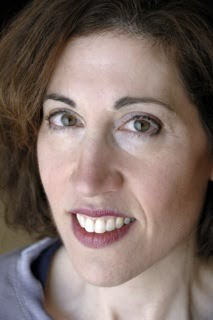If you are looking for a compelling historical YA, don’t miss The Blood Lie (Cinco Puntos Press, September 2011) by Shirley Vernick. The book is based on the first blood libel ever reported in the Western Hemisphere. It took place in 1928 in a small New York State village; the same village that has been the home to the author’s family for more than a century. Today, Shirley lives in Massachusetts with her husband, two daughters, and two frisky dogs. I had the pleasure of meeting Shirley at the AJL Convention in Montreal and I’m happy to welcome Shirley to my blog.
What inspired you to write The Blood Lie?
When I was a sophomore in college, my sociology professor sent us all home for fall break with this assignment: identify a community conflict – past or present – and write a paper about it. Boy, was I mad. I had one measly long-weekend off, and I was going to have to spend it doing a paper? Besides, no juicy controversies ever happened in my dinky little hometown of Massena, NY. I thought I was sunk. So I asked my father, who also grew up in Massena, if he had any ideas. That’s when he told me, for the first time, about the blood libel that happened in Massena when he was a high school senior. It was erev Yom Kippur, and a little Christian girl disappeared. The next thing you know, the Jews were being accused of kidnapping and murdering that little girl and baking her blood in their “holiday foods.” Some of the accusers decided to take action. I couldn’t believe it. In America? In the 20th century? I got an A on the paper.
A few weeks later, the semester ended, I took the final exam, and promptly forgot everything I’d learned in that class – everything except the story of the blood libel. I knew that one day I’d need to write more than a school paper about this important event in American-Jewish history. I’d need to write the book that became The Blood Lie.
Can you tell me a bit about the research required?
I was lucky enough to have access to people with firsthand experience of the blood libel, including my father, a cousin, and the son of the then-officiating rabbi. Unfortunately, when I looked for secondary sources, I discovered a dearth of documentation. Further, the few written sources I did find often contradicted each other. So it was definitely a sleuthing, read-between-the-lines process.
What did you learn that was beyond what you had expected?
I learned that, despite the teeming hate and fear, there were also examples of great compassion, loyalty and friendship during this difficult time. People’s true colors – the good and the bad – really do show during a crisis. I also learned a lot about how rumors spread and take on a life of their own. This blood libel happened in the days before email, Facebook, Twitter, or cellphones, yet the lie went viral.

How has the community responded?
Wherever I am, hardly anyone I talk to has heard of the Massena blood libel – very few Jews and no Gentiles. Massena itself is no exception, since the Jewish community there has all but died out, I’m sad to say. So when I do mention the blood libel, people respond with surprise and fascination, much as I did back in college. Jewish people tend to say, “Wait, there has been a blood libel outside of Eastern Europe or Russia? I never knew.” Gentile people usually say, “What’s a blood libel?” (although the media frenzy over Sarah Palin’s use of the term has somewhat changed that).
What is the best part of being a writer?
For me, the best part is the creating: creating characters, settings and plots. Even if a book is based on real events, there’s still the challenge of shaping the facts into an engaging story. I love translating my mental images into words that allow readers to recreate those images for themselves. Not that readers have to imagine the exact images I have in my own head. Part of the beauty of being a writer is knowing that I’m continually co-creating the story with readers. I can’t imagine anything more satisfying – or fun!
Shirley, thank you for sharing the story behind The Blood Lie!
